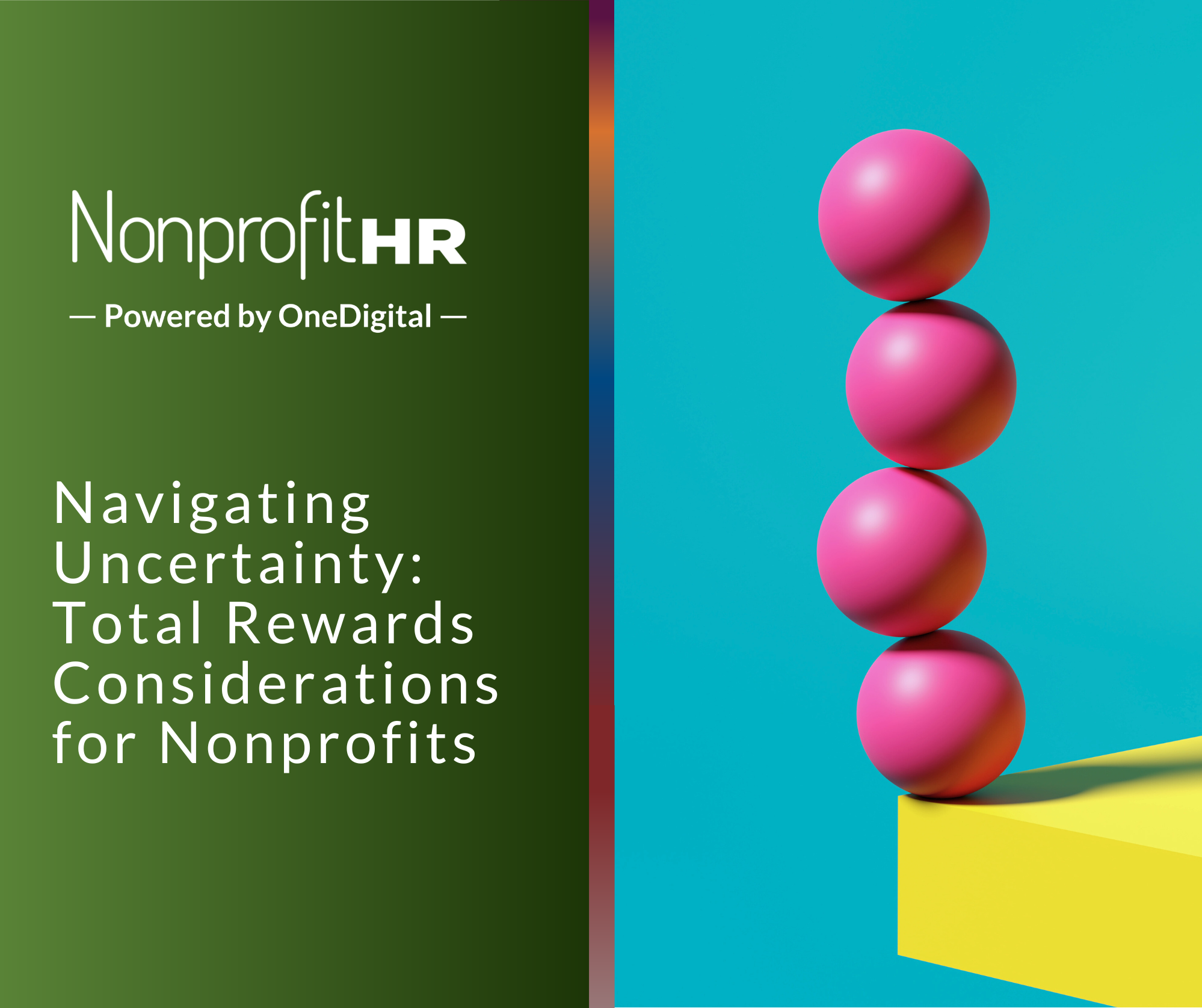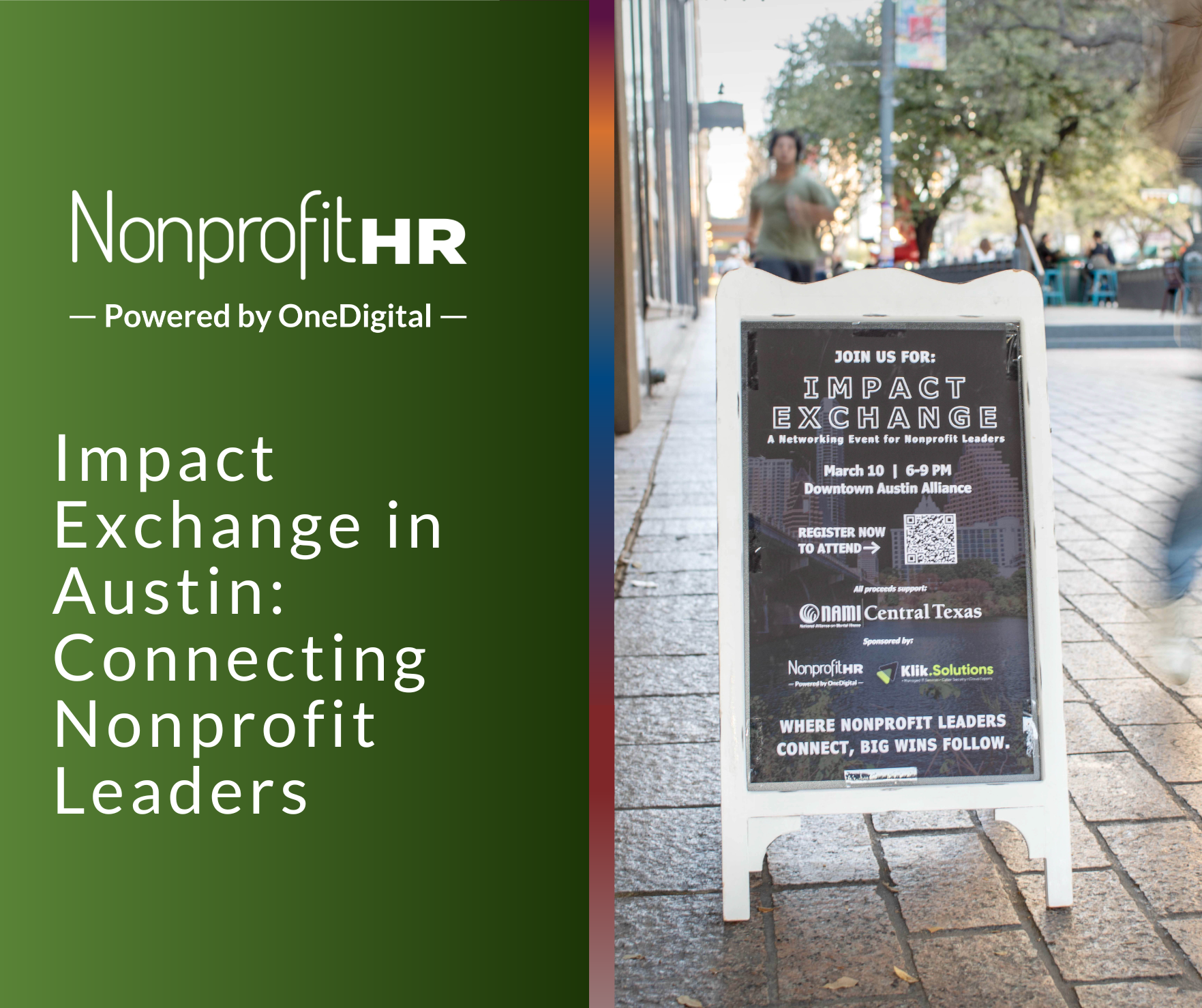WTOP: 5 ways nonprofits can…
Gaining leadership buy-in for organizational diversity, equity, inclusion and justice (DEIJ) goals is an important step towards organizational change. Active, authentic, empathetic and purposeful support from leadership can be the catalyst for creating sustainable impact. Rallying leaders who champion DEIJ work is imperative for moving efforts forward. While receiving leadership buy-in is helpful, leadership doesn’t always feel ready for organizational change.
Why your leadership may not feel ready
While a readiness assessment regarding new DEIJ initiatives can be conducted for the organization, it is important to consider the role of a leader’s personal readiness in the ability to move forward. Thus, to do so, leaders within organizations need to anticipate and embrace change. While many organizations advance without a high level of readiness from their leaders, they often experience roadblocks along the way.
Staff who represent marginalized identities and their allies may want to see action from their leaders on issues that matter most to them—and real, systemic change. It is critical that leaders have a willingness to push beyond their own comfort level to make things happen. Talk is not enough for today’s savvy employee who expects meaningful, timely and relevant action. However, a leader who is ready and truly believes in the work is better equipped to keep things moving forward when the work gets hard, and not be swayed by pushback or obstacles (which are inevitable).
What if there is resistance from leadership?
If you receive pushback from leadership, it is important first to recognize that this type of resistance often manifests as denial, disengagement, derailment, fear, politics and misunderstanding.
Responding to pushback should include transparent communication about “why” DEIJ is an important focus within your organization. Being open and clear about DEIJ benefits will allow people to understand its purpose and will invite conversations for continued dialogue. Having a shared understanding that people are different, yet fundamentally similar provides a basis for DEIJ being more than just about race and gender but being about the shared humanity that is necessary in advancing a mission of connectedness. Being intentional about how the staff and organization can improve because of DEIJ is essential to gaining buy-in. It is also critical to meet people where they are when launching any DEIJ initiative.
Fear is a natural part of this work. However, supporting staff with resources, conversations and a plan can assist in alleviating initial hesitancy. Understand that some leaders and staff may not be personally ready to do the work, and that’s okay. But if this reveals a misalignment in the values of your organization and those of the employee and leads to their unwillingness to contribute to the organization’s vision, then accountability measures must take place.
Be mindful of the business case
Several factors motivate leaders to focus on DEIJ. When it comes to DEIJ, it is always the “right” thing or time to lean in. It is also a smart business decision regarding fiscal performance. When packaging and communicating an effective business case, consider these different motivating factors as it relates to your organization. Ultimately, you want to clearly communicate the need as well as all the benefits and opportunities that come from deepening a commitment to DEIJ.
What are some actionable steps to gain leadership buy-in?
We suggest using the PATH model to start taking intentional action toward implementing DEIJ initiatives within the organization. PATH stands for Partner with people, Ask questions, Trust lived experiences, Hold leadership accountable.
Before starting any DEIJ initiatives, you first need to identify the key stakeholders and those with decision-making power. As a leader, it is important to partner up with the most passionate DEIJ champions inside your organization.
Example: Meet with the head of each department and ask them about their current DEIJ understanding and what change they are most excited to see within the organization. Ensure that you are partnering with team members outside of your typical sphere of influence.
After you have identified key stakeholders, it is time to get curious and gather questions. Start asking “who is not in the room when important decisions are being made” for each business area. Also consider asking questions to determine the gaps in DEIJ knowledge and consider that various leaders may be at different “readiness” stages.
This might be the right time to start considering an internal equity assessment. This assessment will help you understand the current state of your organization as it relates to DEIJ. It will help illuminate strengths and opportunities; plus inform what actions you should implement to improve.
Assessing your organization’s overall staff diversity (i.e. race, gender, age, sexual orientation, etc.), culture, promotion, sense of belonging and compensation practices are some of the foundational ways of gauging where you are on your DEIJ journey. Utilizing this information can provide a “North Star” toward what may need to be organizational priorities to move your DEIJ plan forward.
Example: Share all data that illuminates conversations about the benefits of having a diverse staff group, the connections between feelings of belonging and employee engagement and how engagement levels are connected to profitability, employee satisfaction, staff retention, productivity, etc. This assessment could also be used to share data that shows areas of bias inside of your hiring process, which has resulted in a less diverse workforce.
Which lived experiences are centered as “normal” of the “in-group” and which experiences are part of the “out-group”? Conducting initial focus groups can help prioritize DEIJ initiatives. Gathering qualitative data from the experiences of diverse employees and providing space for them to discuss solutions is a powerful actionable way to gain buy-in from leadership.
Listening to employees via both qualitative focus groups and through quantitative surveys ensures that the voices of marginalized employees are heard and experiences are validated. These personal stories are powerful and can influence leadership to pay attention. In order to not be paternalistic, it’s also important to allow them to share solutions that would drive your DEIJ initiative.
Example: Gather a focus group of 15–20 mid-level employees and ask them about their perceptions, about their career path and leadership support. Anonymously share the findings with leadership and note any patterns around perceived career growth opportunities and lived experience.
One of the most important aspects of an engaged DEIJ journey is accountability. DEIJ should not be a topic that is only discussed for 10 minutes in a quarterly check-in. Instead, DEIJ needs to be woven into the fabric of the organization. DEIJ initiatives should live in every area of the business, and it is leadership’s responsibility to keep this at the forefront of company objectives.
One way to ensure that leadership stays accountable is to have each executive own and report on parts of the strategic DEIJ plan. This helps leadership take ownership of each part of the plan and ensures that the whole plan does not fall solely on the efforts of a DEIJ committee or one singular executive. Power sharing and collective ownership is an important way to make DEIJ efforts sustainable.
Example: After the assessment has been completed and a strategic DEIJ plan has been accepted by leadership, assign to your Chief Marketing Officer an initiative to revamp employee branding with a more inclusive lens. Their yearly bonus will be partially tied to the completion and success of this initiative, which will help them be an accountable leader.
What could be at risk by delaying DEIJ initiatives?
What if you start proposing some of the action steps above and you are still faced with resistance on initiating the DEIJ journey?
It is important to remember that delaying the process of creating a more diverse, inclusive and equitable workspace risks the overall stability of your organization. This delay can lead to premature staff resignations, instability, unproductivity, bitterness, distrust, uncertainty and incivility within the work environment. It can also create a rift between staff and leadership. These all can contribute to an impact on the organizational culture and brand, loss of revenue and more.
Why trust our expertise?
Our DEIJ team is composed of organizational psychologists, facilitators, licensed master-level social workers, HR experts, former teachers, and leadership and development experts. We work as a team of diverse facilitators, coaches, analysts and project managers to assess and implement organizational change through DEIJ strategies.
We believe that when DEIJ initiatives are implemented with intention, there is increased work productivity, greater innovation, a positive culture shift, stronger financial performance, stronger employee retention and stronger mission impact. Our team understands that making DEIJ a priority is essential to the overall success of each organization.
Learn more about this topic! Access the accompanying webinar recording here.
Read Part 1 in the DEIJ Mini Series on Shifting Culture and Systems for Organizational Change.
Contributing Authors
Bryan W. Jackson provides subject matter expert advice, insight and strategic direction to clients. He oversees complex client engagements, manages projects to completion and designs and facilitates DEI training solutions and assessment services to partners and stakeholders. Read full bio.
Steven Krzanowski has developed and executed diversity, equity and inclusion programs and strategies throughout his career in the higher education and nonprofit sectors. In his current role, Steven works with industry leaders as a thought partner to uncover inequities in organizational systems, address gaps in knowledge and skills related to DEI for staff and constituents and develop intentional, data-driven, actionable outcomes to advance DEI initiatives. Read full bio.
































